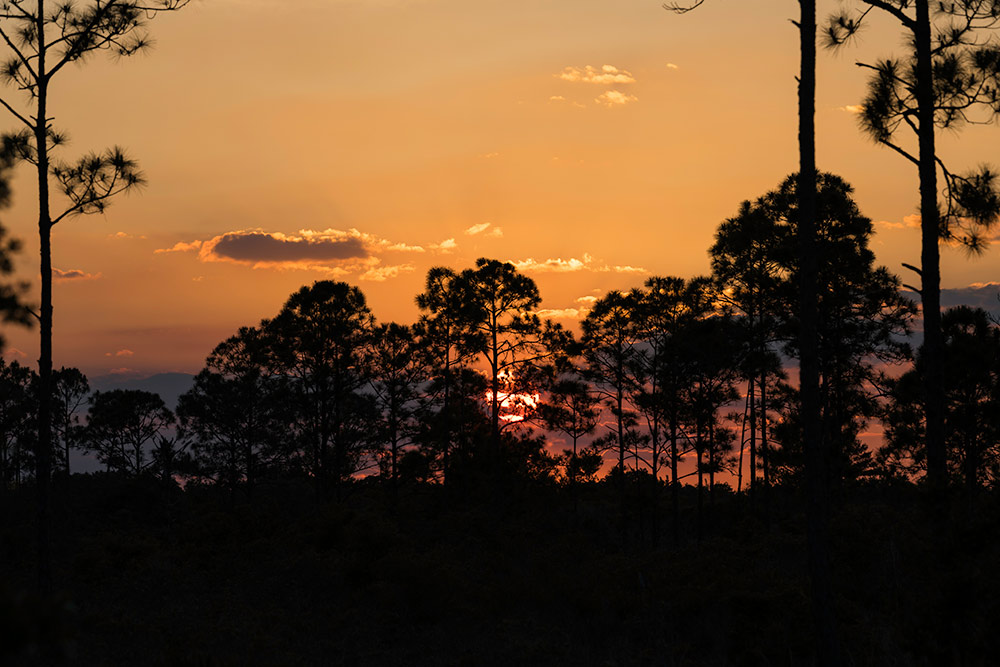According to a recent analysis published in the journal Science, the number of birds in the United States and Canada has declined by nearly 3 billion-a shocking 29 percent of the total-since 1970. The study paints a bleak picture of avian loss among not only endangered species, but supposedly abundant birds like sparrows, and raises questions fundamental to evolutionary biology: What are the genes that influence survival and reproduction? What happens to the genetics of a population when it becomes threatened by extinction? Why do some individuals fare better than others? How do natural populations evolve over short time-scales?
These are questions at the crux of research conducted by evolutionary biologist Nacy Chen, an assistant professor of biology at the University of Rochester.
Chen annually travels to Venus, Florida, to study Florida Scrub-Jays, an endangered population of wild birds that have been individually marked and monitored since 1969. Using 50 years of collected data, Chen creates family trees and develops pedigree simulations to analyze the ways the birds' genetic material is changing over time due to habitat loss. The tools she develops based on the field data allow her to investigate how different evolutionary forces shape genetic variation in a population and affect the probability of extinction.
"It's really important to me to study organisms in their natural environment because selection pressures will be different in the lab versus in the field," she says.
While the data Chen gathers is useful for conservationists, her research also can have important implications for understanding human genetics. She recently received a National Institutes of Health Maximizing Investigators' Research (MIRA) grant for her research to develop "a deeper understanding of the genetic basis of contemporary evolution in nature, [which] is critical to predict accurately how modern public health and medical interventions affect the long-term health and demography of human populations."
Chen received her PhD from Cornell University and her undergraduate degree from Harvard University. At Harvard, she studied disease in house finches, specifically a bacteria that caused conjunctivitis- or pink eye-and consequently massive population declines in house finches in the 1990s. Chen sequenced the genes of house finches before and after the epidemic to observe how the birds' genome changed to make the birds more resistant to the bacteria.
"I've always been interested in understanding how populations evolve in nature, and birds are relatively easy to follow and observe," Chen says. Plus, she laughs, "I do love birding. It's a different way of interacting with a place because it's like a scavenger hunt. Birds are also just super fun to watch because they do the craziest things and you're like 'What? What are you thinking?"
In the field
(University of Rochester photos / J. Adam Fenster)
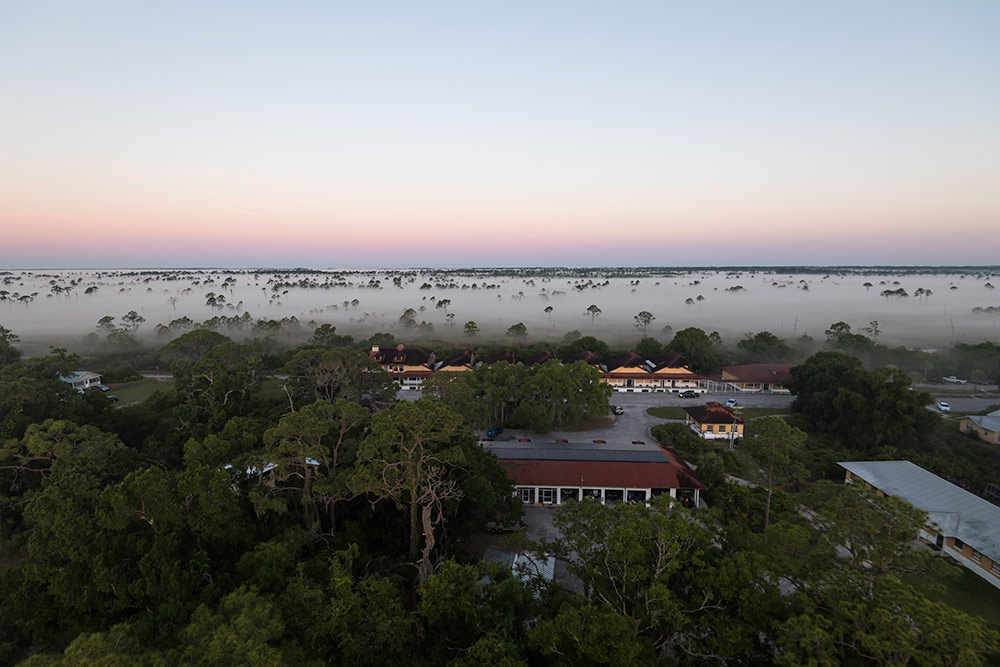
FIELD STATION: As part of a collaboration with Cornell University and Archbold Biological Station, Nancy Chen annually travels to Archbold Biological Station in Venus, Florida, to study, observe, and band Florida Scrub-Jays. Archbold Biological Station was established in 1941 and is one of the oldest field research stations in the United States, while the population of scrub-jays at Archbold is one of the largest remaining populations of the species.
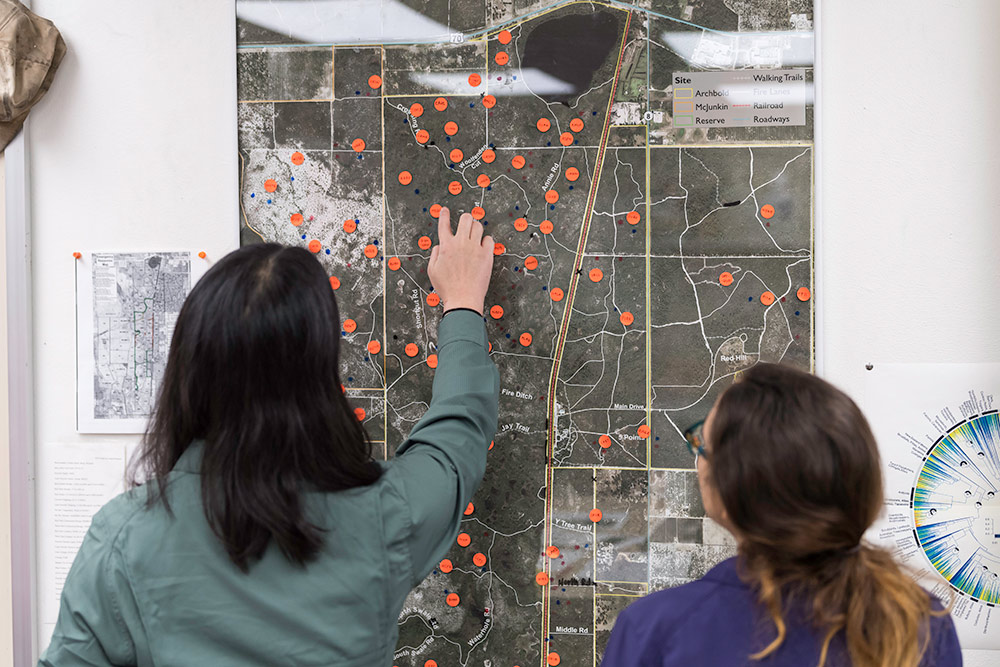
MAPPING TERRITORIES: Chen views a map of the preserve at Archbold Biological Station before heading out to the field with her fellow researchers. The map indicates locations where researchers have discovered Florida Scrub-Jay nests. It can take up to nine hours to find one new scrub-jay nest because the researchers monitor approximately 100 territories, each a few hectares in size (one hectare is equal to approximately 2.5 acres, or about the size of a soccer field). Researchers and volunteers map all the territories once a year and census the entire bird population once a month.
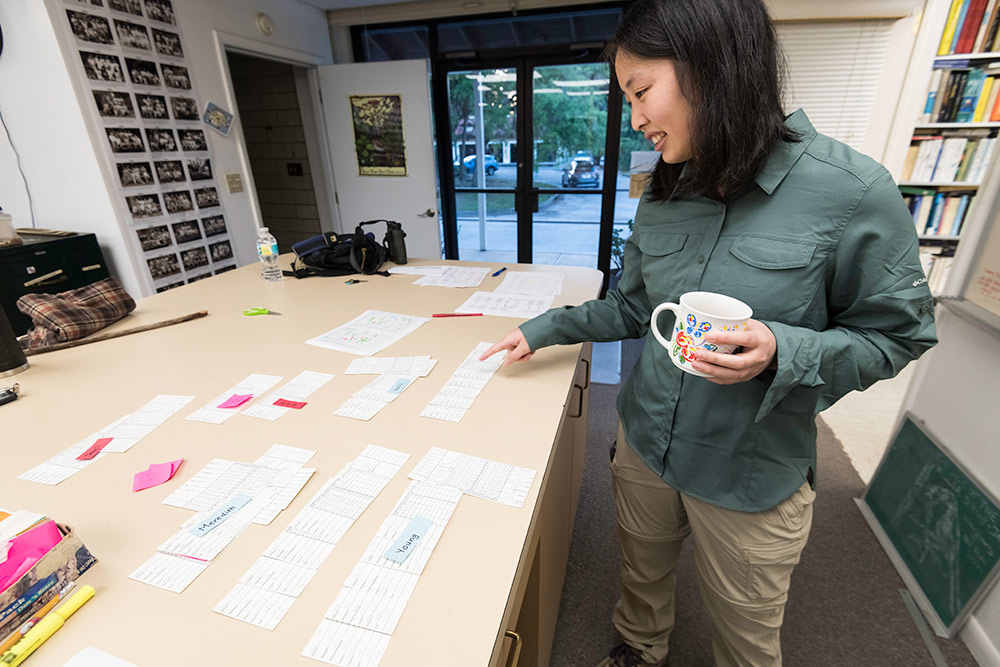
METICULOUS NOTES: The researchers keep meticulous notes on nest cards. The cards contain information on the numbers of eggs they find in each nest, the number of young, and descriptions of nest locations and surrounding habitats. "It's like Big Brother on steroids," Chen says. "Every individual is marked and we follow individuals throughout their lifetime so we know everything about them." The researchers know how long each bird lives, how many offspring they produce each year, and how many of those offspring then survive. Using this data, Chen creates population pedigrees-akin to very detailed family trees-charting how every individual in a population through time is related to all the other individuals. Pedigree data allow researchers to make observations about the fitness of the different individuals and the evolutionary processes that shape variations within a species' genome.
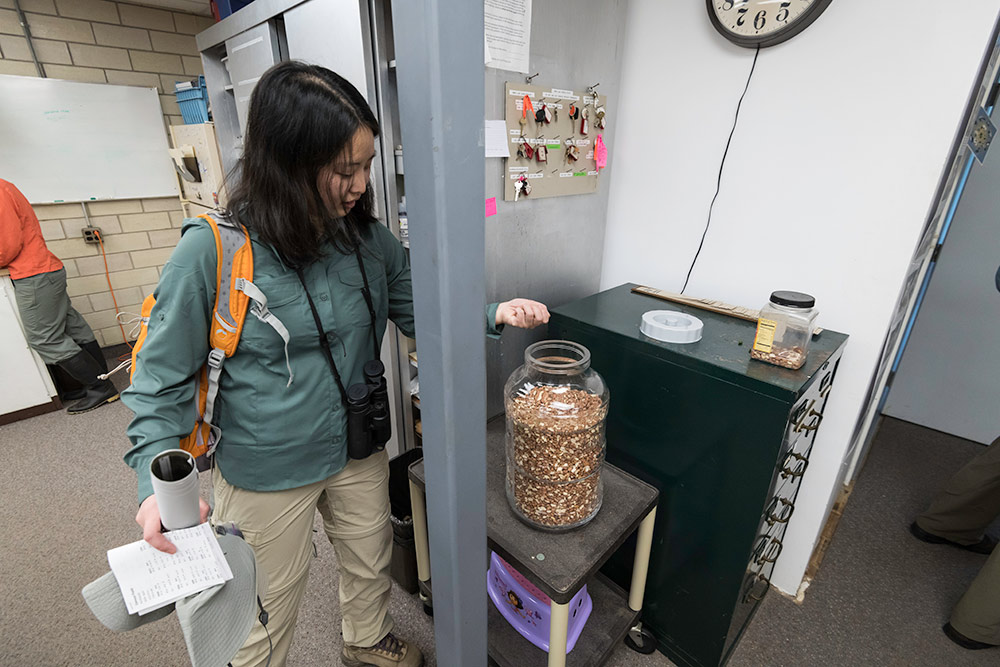
LURING THE JAYS: Chen grabs a handful of peanuts, which she uses to lure the jays in order to observe them. The researchers also catch and band any "immigrant" birds that enter the area with a wire cage known as a potter trap. The door is propped open with a stick tied to a string and a handful of peanuts is placed inside. "It's like an Elmer Fudd trap," Chen says. "We'll wait in the scrub for hours and then pull the string when the jay we want to catch goes in."
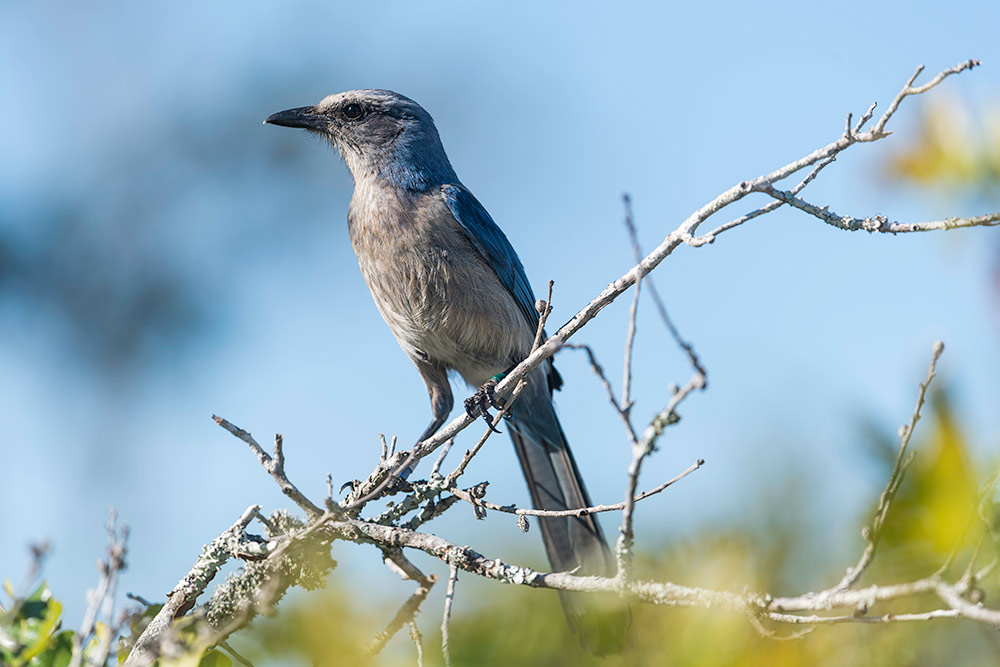
THE FLORIDA SCRUB-JAY: Florida Scrub-Jays are about 12 inches long and are characterized by a blue head, whitish forehead, blue wings, gray back, blue tail, and black legs, feet, and beak. The Florida Scrub-Jay is only one of 15 bird species native to the United States and the only bird species endemic to Florida. The jays are nonmigratory, meaning they tend to stay close to where they were born. This trait makes it easier for researchers to follow a single population in the wild.
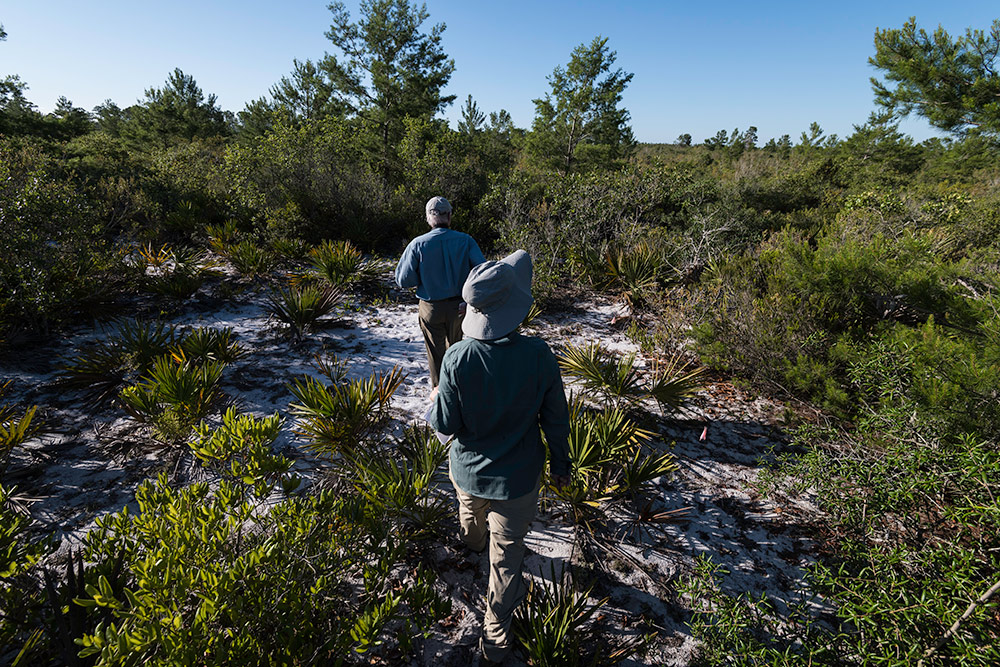
IN THE FIELD: Chen walks through scrub oak and palmetto during a morning territory mapping session with fellow researcher John "Fitz" Fitzpatrick, director of the Cornell Lab of Ornithology. The scrub-jays' habitat consists of dry sand dunes and fire-maintained slash pine, scrub oak, and palmetto plants. Before human beings, there were frequent fires caused by lightning strikes, so the ecosystem and many of the organisms, including Florida Scrub-Jays, are tightly linked to the fire cycle.
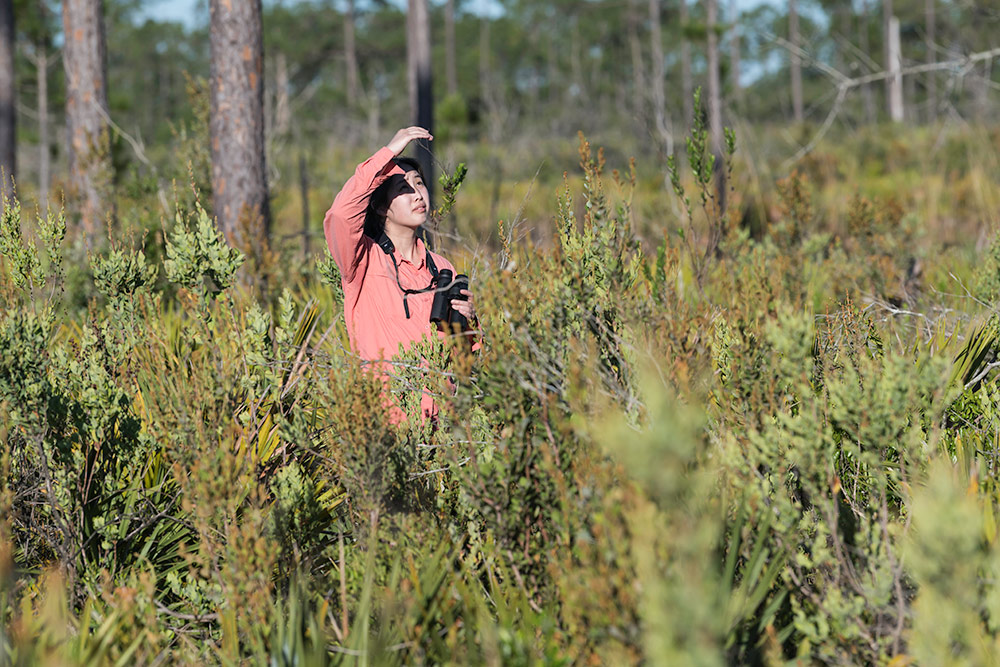
A THREATENED SPECIES: Since 1987, Florida Scrub-Jays have been listed as a "Threatened" species under the federal Endangered Species Act. This is mostly due to "human habitat destruction," Chen says. The scrub-jays' habitat has been altered by increasing development, land-use alteration to make more room for agricultural fields, and fire suppression. If the area witnesses a decrease in fires, the scrub gets too overgrown to support many of the species, and the researchers see a decrease in scrub-jay fitness. Studying a threatened species gives Chen the opportunity to better understand how a population's genome changes when the population is declining in size.
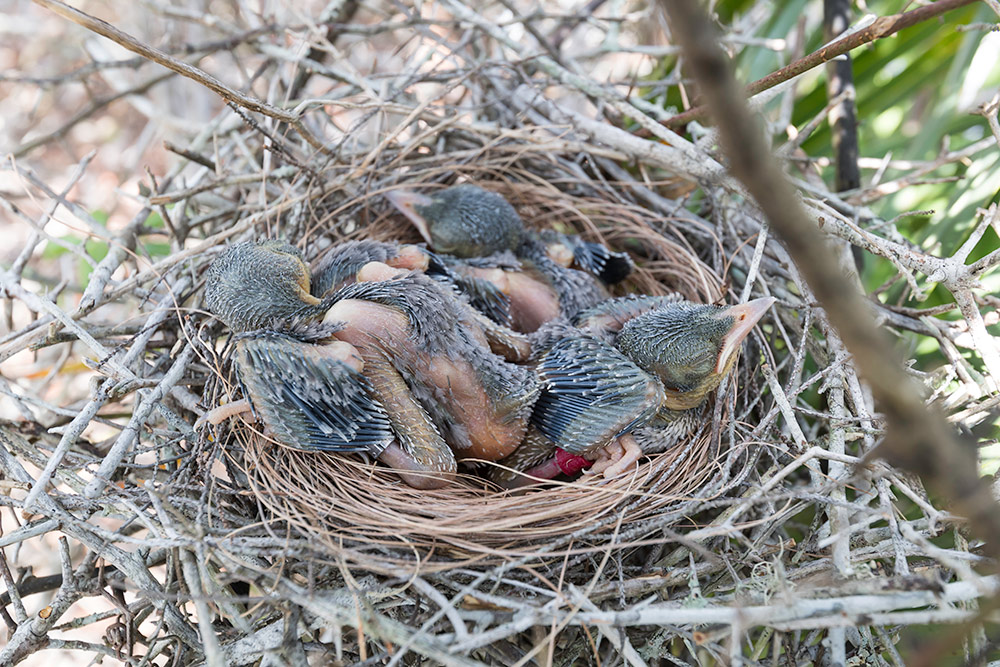
SEARCHING FOR NESTS: In the field, the researchers search for new nests. When they find a nest, they tag the nestlings with a metal band that is a US Fish and Wildlife tracker. Each bird is also tagged with a unique combination of colored bands to identify it. The year 2019 marks the 50th anniversary of the Florida Scrub-Jay study. "There's a half century worth of data, and it's this gold mine," Chen says. "We also have blood samples, so we have the ability to extract DNA from individuals going back 20 years. It's one of these really nice data sets where we can directly measure how the population is evolving."
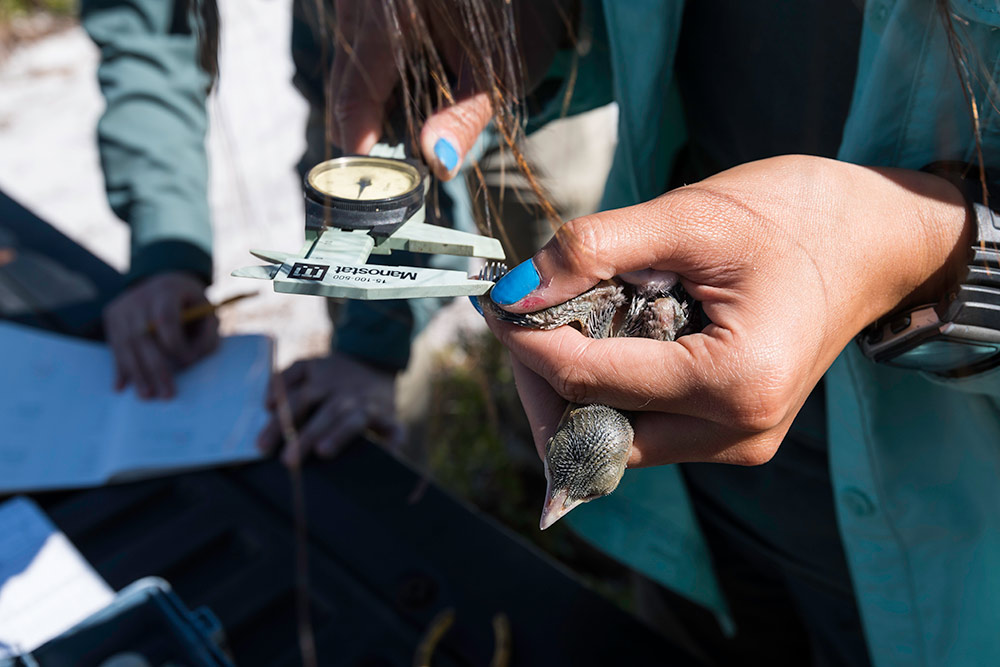
INCREASED INBREEDING: Chen and her colleagues have observed increasing levels of inbreeding within the Florida Scrub-Jay population because the number of immigrants coming in to the population over time has been declining. "That was a big shock to all the scrub-jay conservationists, and it's really driven home the importance of maintaining conductivity among different populations," Chen says. Based on these observations, Florida Fish and Wildlife is now conducting translocation projects to move jays from population to population, a type of "fake forced immigration."
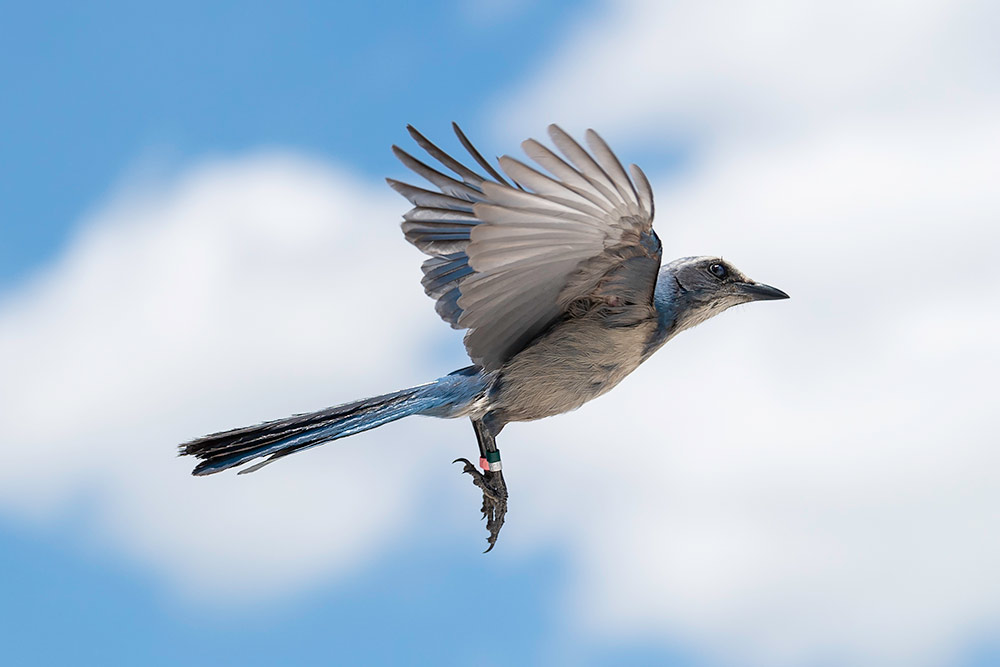
BENEFITS TO HUMANS: The tools Chen develops based on the Florida Scrub-Jay data can also be applied to human genetics. There are very few studies that trace human populations and their environments over long-term periods, so studies such as Chen's give researchers unique opportunities to test long-standing questions in evolutionary biology. "The idea is to simulate the Mendelian transmission of alleles down the pedigree," Chen says. "We have a mom and a dad, mom gives us half her genes and dad gives us half his genes. If I have the pedigree and know all these relations, I can simulate that transmission. That is a powerful way of looking at how the genome and genetic diversity change through time."
